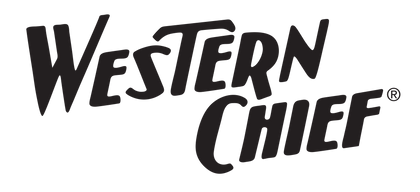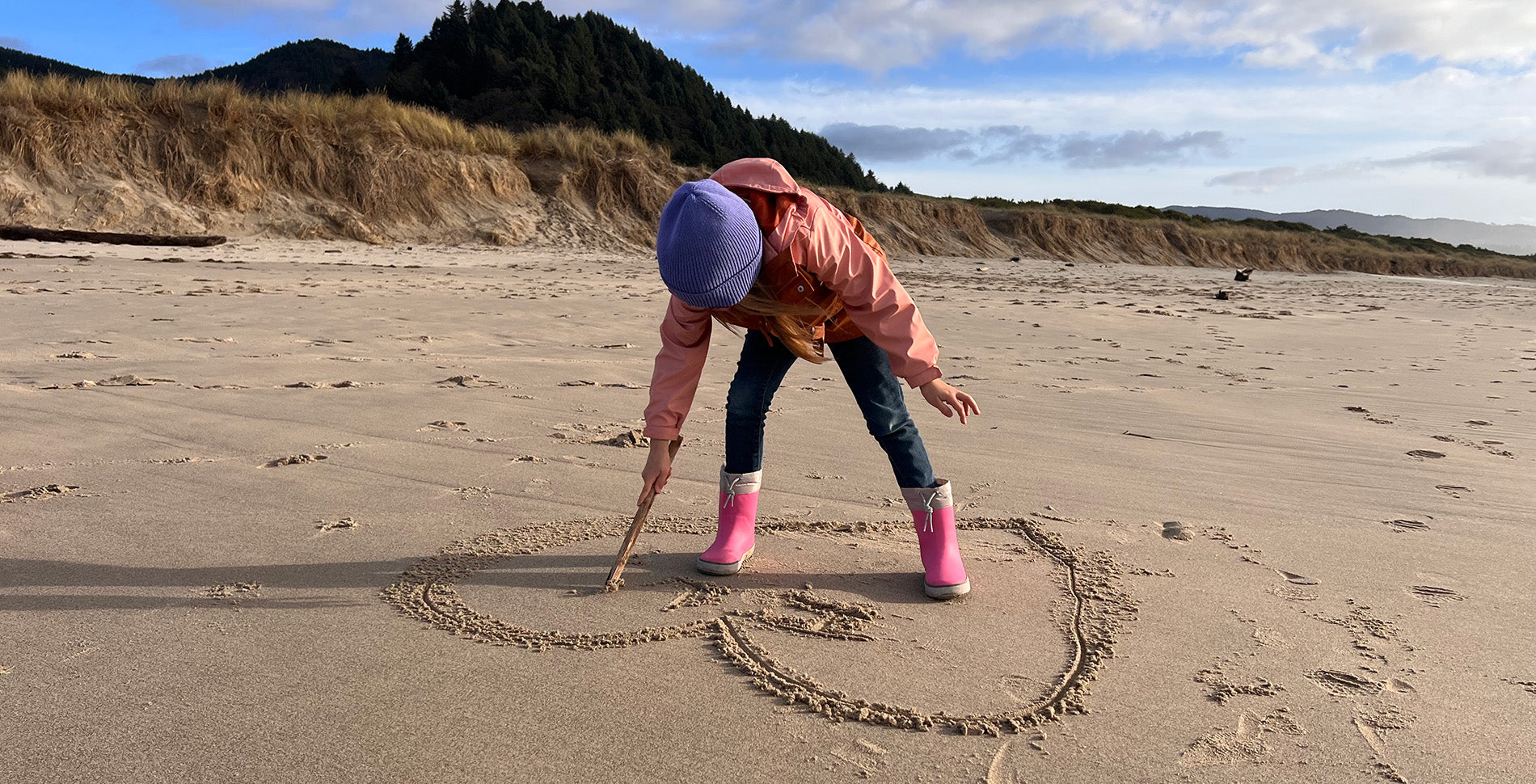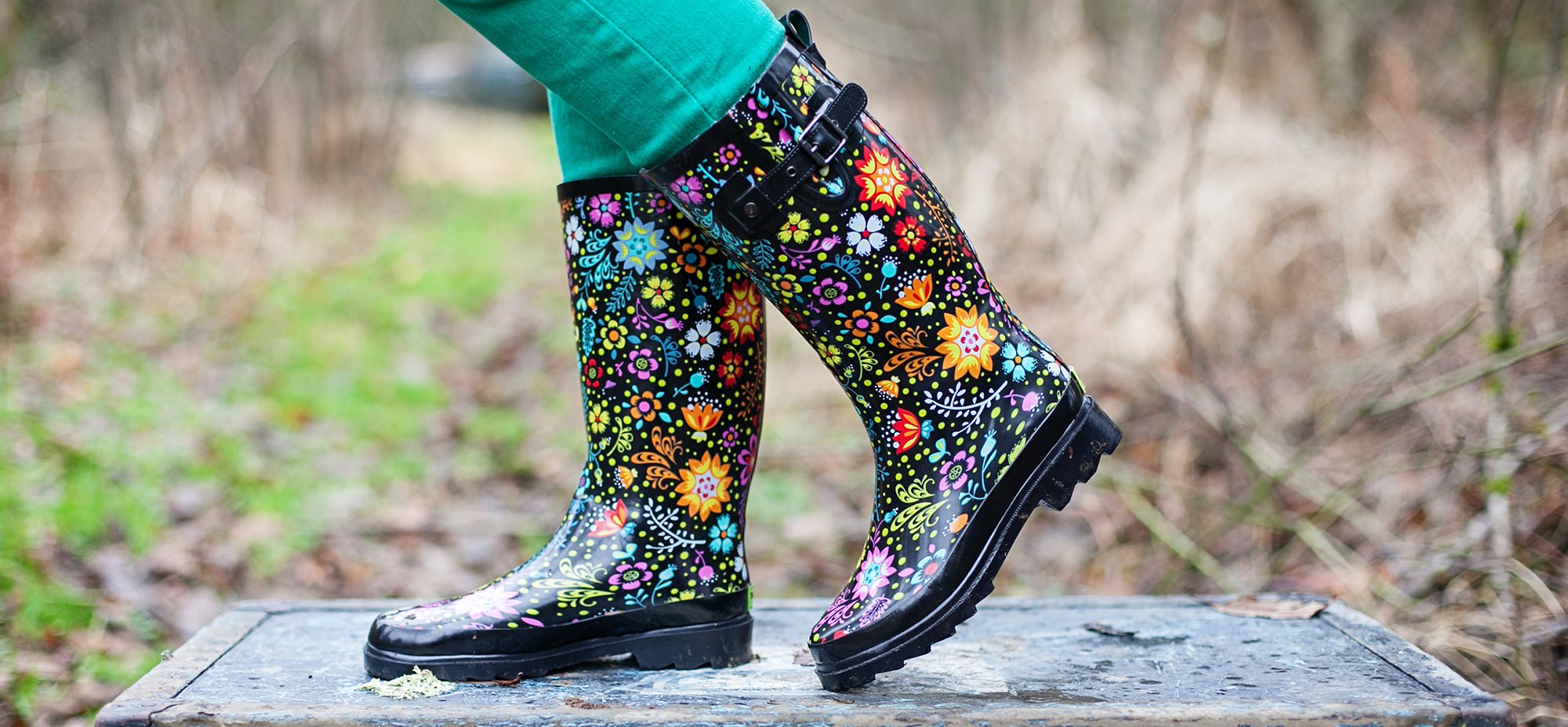A Day On The Farm IN WESTERN CHIEF'S COUNTRY BLOOM RAIN BOOTS by @MuddyOakHennHouse
Our friend, Hannah, from @muddyoakhennhouse invited us to get a peak at what a day on her farm looks like in her Western Chief Country Bloom rainboots. Enjoy!
Y'all ever wonder what a day on the farm looks like? Or what is the difference between a farm and a homestead? I often get asked if I have a farm, often more times than anyone ever asks if I have a homestead. I consider us a homestead in the modern sense of the word, who is working towards becoming a small farm who also practices homesteading. Let's talk about why and what a day here at our homestead looks like. Keep in mind, the size and goals of the homestead/farm dictates what the day will look like and that will be different from family to family. We will touch base on that as well.

Let's start with the definition of each. By definition, a farm is an area of land and its buildings used for growing crops and rearing animals. typically under control of one owner or manager. Further defined (By the USDA) as any place where $1000 or more of agricultural products were produced and sold or normally would have been sold that year. According to the USDA, the average farm size is 444 acres. However, we are going to focus on its definition. I personally know many small farms who have small amounts of acreage and thrive.
As for a homestead, by definition, is a home and the land around it. A piece of land gained from US public lands by living on and farming it. This is a very traditional definition of homestead. Modern times has coined the term '"homestead" and "homesteading" as smaller plots of land (Usually less than 100 acres) that grow food to support a single family. They are also designed to become or create self-sufficiency.

In those two definitions, you can see why I consider our space a homestead (growing food to support a single family) with goals of becoming a farm who practices homesteading as well. See, here at Muddy Oak Hen House and Farm, we currently raise crops and livestock for the main goal of self-sufficiency. However, we do raise crops and livestock for immediate family, friends and neighbors as well, and on occasion sell or trade our overage. It has been a goal of mine for many years to open a roadside shop to sell meat, eggs, and produce. Imagine a very small mom and pop grocery shop. However, at this time, it's just not a reality. So how big is Muddy Oak Hen House and Farm? What does an average day around here look like?
Well, we have three acres with hopes of adding more in the near future. The hen house is currently home to a flock of thirty hens. We also have thirty chicks in our mini coop that will soon graduate to the hen house as a new flock! And last but not least, we have six hogs in the hog pin -three of which will provide pork for our family, two for immediate family, and one for a neighbor. Our place is also home to four children, several barn cats, two house cats, and one rowdy English Springer Spaniel. In addition to the livestock and pets, we manage a beautiful garden that grows over seventy five tomato plants, twenty pepper plants, plenty of cute flowers, corn, melons, pumpkins, herbs, and whatever else feels right from year to year. So, you can imagine that our days are crammed with many chores and things to be done! Phew!

In season, which are spring, summer, and fall for us, a day typically starts with a trip to the hen house and coop to water and check the feed. We gather eggs at the hen house and when weather permits (with the exception of early spring and late fall) we open the run for the hens to frolic the property freely. During early spring and late fall days, we refrain from allowing the hens out to their run due to a higher risk of predators and migration. While we try to keep our flock safe, we also firmly believe that this is their one life to be loved and to live happily! After the hens are cared for, we check in with the hogs who are on automatic water and therefore require much less attention, which means we get to hang out with them and love them a little more hands on. We check their feeder daily and fill as needed. Typically with six hogs, this means the feeder gets topped off every other day. Due to the property's use before we took ownership, the hogs rarely are out of their pin, though it does happen on occasion. Next, we feed and water the barn cats and attempt to give them love as well. A few of them are typical barn cats- you know, the ones who scurry along at the sight of a human. Yet some are sweet and loving and easy to catch and pet. Springtime means lots of preparation and planting of the garden, followed by weeks of weeding and mulching and pruning/pinching the plants; summer is full of garden maintenance squeezed into the little corners of time we have left at the end of the day; fall brings harvest and canning; and winter brings us rest and minimal chores outside of the normal. "Normal" being our livestock and critters who stay here year round. Each part of our homestead/farm serves a purpose, whether that is seasonally, year round or till their time is done.

I sure hope y'all enjoyed learning a little more about farming/homesteading and enjoyed a walk around a day in the life here at Muddy Oak Hen House and Farm! See you next time!
Join the Western Chief family and follow us on Instagram here.
See more of Hannah and her farm on Instagram here.







